Hobbywing QuicRun WP1080 G2 Handleiding
Hobbywing
Radiografisch bestuurbaar speelgoed
QuicRun WP1080 G2
Bekijk gratis de handleiding van Hobbywing QuicRun WP1080 G2 (1 pagina’s), behorend tot de categorie Radiografisch bestuurbaar speelgoed. Deze gids werd als nuttig beoordeeld door 28 mensen en kreeg gemiddeld 4.6 sterren uit 14.5 reviews. Heb je een vraag over Hobbywing QuicRun WP1080 G2 of wil je andere gebruikers van dit product iets vragen? Stel een vraag
Pagina 1/1

Model QUICRUN WP 1080 G2 Brushed
Cont. / Peak Current
Motor Type
Applications
LiPo / NiMH Cells
BEC Output
Size
Weight
Programming Port
80A / 400A
Brushed Motor (540 / 550 size motors)
1/10th Rock Crawler
2-3S LiPo / 5-9S NiMH
6V / 7.4V / 8.4V @ 4A (Switch-mode)
37.2 x 31.9 x 18.4mm
70.2g (with wires&connectors)
Separate Port
• Fully waterproof design for all conditions. (Note: please clean and dry it after use for avoiding rusty connectors)
• HOBBYWING patented copper heat-conductive plates attached to the MOSFET board allows the internal heat to be quickly transferred to the CNC-machined aluminum reticular heat sink for great heat dissipation.
• High reliable electronic switch design prevents mechanical switch failure due to dirt, water, dust and etc.
• Tunable drag brake and drag brake rate for different vehicles, tracks and control feel. Adjustable PWM frequency combined with advanced freewheeling (/DEO) technology guarantees great throttle linearity and driving feel.
• Innovative real car mode, make the downhill control of the vehicle more stable, and provide new fun for the car.
• It has the function of using transmitter (AUX channel) to adjust the drag brake force in real time, and switch the drag brake force anytime and anywhere according to the demand.
• Multiple protections: low-voltage cutoff protection, thermal protection, and throttle signal loss protection.
• Separate programming port to easily connect the LED program card to the ESC.
• Single-button ESC programming and factory reset.
• ESC programming via Hobbywing LED program card.
• Motor Wiring
There is no polarityon the M+/M- two ESC-to-motor wires, hence, do not worry on how you connect them initially. You may find it necessary to swap two wires if the motor runs in reverse.
• Receiver Wiring
Plug the throttle control cable (white/red/black cable) on the ESC into the throttle (TH) channel on receiver. The throttle control cable will output the voltage of 6V/7.4V/8.4V to the receiver and steering servo. Hence, no separate battery can be
connected to the receiver. Otherwise, your ESC may be damaged. Single white cable: This cable is used to connect the receiver AUX channel and cooperate with the "real car mode" in the running mode of esc to realize the function of real-time
switching of motor rotation direction through the transmitter. For details, please refer to the introduction of "real car mode" below the parameter items. Single orange cable: This cable is used to connect the receiver AUX channel, which can
realize the function of real-time and linear adjustment of drag brake force through the transmitter.
• Battery Wiring
Proper polariy is esential. Please ensure positive (+) connects to positive (+), and negative (-) connects to negative (-) when plugging in the battery! When reverse polarity is applied to your ESC from the battery, it WILL damage your ESC. This WILL
NOT be covered under warrranty!
Congratulations and thank you for your trust in Hobbywing product. By purchasing the
QUICRUN WP 1080 G2 BRUSHED, you have chosen a high performance sensored brushed
electronic speed controller! This speed controller is equipped with high-tech features to
enhance your experience with Hobbywing brushed power systems. Improper usage and
unauthorized modification to our product is extremely dangerous and may damage the
product and related devices. Please take your time and read the following instructions
carefully before you start using your speed control. We have the right to modify our product
design, appearance, features and usage requirements without notification.
This is an extremely powerful brushed motor system.
For your safety and the safety of those around you,
we strongly recommend removing the pinion gear
attached to the motor before performing calibration
and programming functions with this system. It is
also advisable to keep the wheels in the air when
you turn on the ESC.
ATTENTION
Begin using your ESC by calibrating with your tramistter. We strongly recommend Hobbywing users to use the “Fail Safe” function on the radio system and set (F/S) to “Output OFF” or “Neutral Position”. Example of
calibrating Neutral range and Endpoint.
IMPORTANT
Ra d o a brat o ni C li i
1
• Power ON/OFF:
(Start with the ESC turned off), press the ON/OFF button to turn on the ESC.
(Start with the ESC turned on) press and hold the ON/OFF button to turn off the ESC.
• Warning Tones:
With the ESC is turned on in the normal way (that is turn it on without pressing and holding the SET button): if you set the “Battery Type” to “LiPo”, the motor will beep N (number) beeps to indicate the number of LiPo cells you have
plugged in (i.e. 2 beeps indicates a 2S LiPo, 3 beeps indicates a 3S LiPo.) and then a long beep to inform you that your ESC is ready to work. If you set the “Battery Type” to “NiMH”, the motor will only beep a beep to indicate the ESC
is in NiMH mode and then another beep to inform you that your ESC is ready to function.
Power ON/ O Warn ng FF &i Tones
2
1. Turn on the transmitter, ensure all parameters (D/R, Curve, ATL) on the throttle channel are at default (100%). For transmitter without LCD, please turn the
knob to the maximum, and the throttle “TRIM” to 0. Please also turn the corresponding knob to the neutral position. Please ensure the “ABS/braking
function” of your transmitter must be DISABLED.
2. Start with transmitter on and the ESC turned off but connected to a battery. Holding the SET button and press the ON/OFF button to turn on the ESC, the
RED LED on the ESC starts to flash (Note: the motor beeps at the same time), and then release the SET button immediately(The ESC will enter the p
rogramming mode if the SET button is not released in 3 seconds, please restart from step 1.).
Note: Beeps from the motor may be low sometimes, and you can check the LED status instead.
Move the throttle trigger to the neutral
position and press the set button.
Release the set
button once the
LED flashes.
3. Set the neutral point, the full throttle endpoint and the full brake endpoint.
• Leave transmitter at the neutral position, press the SET button, the RED LED flashes 1 time and the motor beeps 1 time to accept the neutral position.
• Pull the throttle trigger to the full throttle position, press the SET button, the RED LED blinks 2 times and the motor beeps 2 times to accept the full throttle endpoint.
• Push the throttle trigger to the full brake position, press the SET button, the RED LED blinks 3 times and the motor beeps 3 times to accept the full brake endpoint.
4. The motor can be started 3 seconds after the ESC/Radio calibration is complete.
The RED LED
flashes once and
motor emits
“Beep” tone.
Move the throttle trigger to the end position
of forward and press the set button.
The RED LED flashes
twice and motor emits
“Beep-Beep”
tone.
Move the throttle trigger to the end position
of backward and press the setup button.
The RED LED flashes
twice and motor emits
“Beep-Beep-
Beep” tone.
1. Program your ESC with the SET Button
2. Program your ESC with a LED program card
• For easy recognition, the motor beeps at the same time when the Red LED flashes.
• When “N” (the number) is equal to or bigger than 5, we use a long flash to represent “5”. For
example, the Red LED flashes a long flash (and the motor beeps a long beep at the same time)
indicating you are in the 5th programmable item; if the Red LED flashes a long flash and a short
flash (and the motor beeps a long beep and a short beep at the same time) indicating you are in
the 6th programmable item; a long flash and two short flashes ( a long beep and two short beeps
at the same time) indicating you’re in the 7th programmable item and so on.
• Restore the default values with the SET button
Press and hold the SET button for over 3 seconds anytime when the throttle is at the neutral position (except during the ESC calibration and programming). The Red LED flahses a long flash (the motor beeps a long beep at the same time) and
then a short, single flash that repeats indicating that you have successfully restored all the default values within your ESC. Power on again before running.
• Restore the default values with a LED program card.
After connecting the LED program card to the ESC, press the “RESET” button and the “OK” button to factory reset your ESC.
• The Red LED dies out when the throttle trigger is in throttle neutral zone.
• The Red LED flashes when your vehicle runs forward and it turns solid Red when you pull the throttle trigger to the full throttle endpoint.
• The Red LED flashes when your vehicle brakes and it turns solid Red when you push the throttle trigger to the full brake endpoint and set the “maximum brake force” to 100%.
• The Red LED flashes when your vehicle runs backward and it runs solid Red when you push the throttle trigger to the full brake endpoint and set the “maximum reverse force” to 100%.
ATTENTION
Enter the 2
nd
item
"Battery Type"
Hold the SET button
Switch on the ESC
Red LED flashes
Red LED flashes
once
Red LED flashes
twice
Red LED flashes
3 times
Red LED flashes
N times
Release
SET button
Release
SET button
Press
SET button
Press
SET button
Press
SET button
Press
SET button
Release
SET button
Release
SET button
Red LED flashes once, choose "LiPo"
Red LED flashes twice, choose "NiMH"
Red LED flashes once, choose "Disabled"
Red LED flashes twice, choose "Auto (Low)"
Red LED flashes 3 times, choose "Auto (Medium)"
Red LED flashes 4 times, choose "Auto (High)"
Red LED flashes once to choose"Forward with brake"
Red LED flashes twice to choose"Forward / Reverse with brake"
Red LED flashes 3 times to choose"Forward / Reverse"
Enter the 3
rd
item
"Cutoff Voltage"
Enter the N
th
item
Enter the 1
st
item
"Running Mode"
Turn off the ESC
Turn on the transmitter
......The following steps are just like the above setps......
Finish programming, switch off the ESC, and then switch it on
Click the SET button to choose the option, the times
the red LED blinks indicates the option number you are
going to select.
After entering the
corresponding item, the
red LED starts to blink,
the times it blinks
represents the current
option number.
Press SET key to choose the value, the flash times of the
RED LED means the option number. (Once means the 1st
option, twice means the 2nd option, etc.)
External Programming
Port for Connecting
Program Card.
1.Running Mode
2.Battery Type
3.Cutoff Voltage
4. Initial Start Force
5.Max. Forward Force
6.Max.Reverse Force
7. Max. Brake Force
8.Initial Brake Force
9. Drag Brake
10.Drag Brake Rate
11.Neutral Range
12. Start Mode/Punch
13.PWM Frequency
14.BEC Voltage
15.Freewheeling
Option 1
Fwd/Brk
LiPo
Disabled
0%
25%
25%
0%
0%
0%
Level 1
0.02ms
Level 1
1K
6V
Enabled
Option 2
Fwd/Rev/Brk
NiMH
Auto (Low)
2%
50%
50%
12.5%
6.25%
5%
Level 2
0.03ms
Level 2
2K
7.4V
Disabled
Option 3
Fwd/Rev
Auto (Medium)
4%
75%
75%
25%
12.5%
10%
Level 3
0.04ms
Level 3
4K
8.4V
Option 4
Real car
Auto (High)
6%
100%
100%
37.5%
18.75%
50%
Level 4
0.05ms
Level 4
8K
Option 5
8%
50%
25%
60%
Level 5
0.06ms
Level 5
16K
Option 6
10%
62.5%
31.25%
70%
Level 6
0.07ms
Level 6
Option 7
12%
75%
37.5%
80%
Level 7
0.08ms
Level 7
Option 8
14%
87.5%
43.75%
90%
Level 8
0.10ms
Level 8
Option 9
16%
100%
50%
100%
Level 9
0.12ms
Level 9
Programmable Item
07
E Exp anat on for l i LD tatuSs
08
Troub e hoot nglsi
03
Features
02
Warn ngis
04
Spe f at onci icis
05
C ionne tcons
06
ES SC etup
Pr ogram ma b e temlI s
3
ES PC r ogram m ngi
4
Fa to ry e etcRs
5
CAUTIONS
ATTENTION
01
D a meri lsci
Those “black background and white text” options are the factory default settings.
1. Running Mode
It’s a racing mode. It has only forward and brake functions.Option 1: Forward with Brake.
This option is known to be the “training” mode with “Forward/ Reverse with Brake” functions. Hobbywing has adopted the “DOUBLE-CLICK” method, that is your vehicle only brakes on the 1st time Option 2: Forward/ Reverse with Brake.
you push the throttle trigger forward (brake) (1st push). The motor will reverse when you release the throttle triggle and re-push the trigger(2nd push).
This mode is often used by special vehicles (rock crawler). It adopts the “SINGLE-CLICK” method. The vehicle will brake immediately when you push the throttle trigger forward (brake).Option 3: Forward and Reverse.
Option 4: Real car mode
When this mode is set, pushing the throttle trigger is always braking, the purpose is to simulate the real vehicle and realize the smooth downhill of the vehicle through the control of the brake. In addition, when this mode is set,
connect the single white signal cable of the esc to the AUX channel of the receiver, the real-time switching of the motor rotation direction can be realized through the channel switch/key corresponding to the transmitter. That is, the
vehicle can move forward or backward by pulling the throttle trigger through the control of the transmitter. When the maximum brake force is not enough to stop the vehicle on the ramp, you can also try to switch the motor rotation
direction, and realize the smooth downhill of the vehicle through the reverse control of the motor.
2. Battery Type
Select this option when you use a LiPo battery and set the cutoff voltage accordingly. Option 1: LiPo.
Select this option when you use a NiMH battery and set the cutoff voltage accordingly. Option 2: NiMH.
3. Cutoff Voltage
Sets the voltage at which the ESC lowers or removes power to the motor in order to either keep the battery at a safe minimum voltage (for LiPo batteries). The ESC monitors the battery voltage all the time; it will immediately cut off the output
when the voltage goes below the cutoff threshold. The RED LED will flash a short, single flash that repeats ( -, -, -) to indicate the low-voltage cutoff protection is activated. ☆ ☆ ☆
The ESC does not cut the power off due to low voltage. Please pay attention to the power change of your vehicle. In general, the battery voltage gets pretty low when your vehicle is severely losing power, then you should Option 1: Disabled.
stop using that pack.
Low cutoff voltage, difficult to get the LVC protection activated, is applicable to batteries with poor discharge capability. The corresponding cutoff voltage is 3.0V/Cell for Lipo battery and 4.5V for whole NiMH pack. Option 2: Auto (Low).
Option 3: Auto (Medium). Medium cutoff voltage, prone to getting the LVC Protection activated, is applicable to batteries with ordinary discharge capability. The corresponding cutoff voltage is 3.2V/Cell for Lipo battery and 5.0V for whole NiMH pack.
High cutoff voltage, very prone to getting the LVC Protection activated, is applicable to packs with great discharge capability. The corresponding cutoff voltage is 3.4V/Cell for Lipo battery and 5.5V for whole NiMH pack.Option 4: Auto (High).
4. Initial Start Force
It’s the initial force when you pull the throttle trigger from neutral position toward throttle position. A suitable start force can effectively prevent vehicle from sliding when you apply a low throttle amount.
5. Max. Forward Force
It’s the force when throttle trigger is at the full throttle position. It’s adjustable among 25%, 50%, 75% and 100% (by default). You can lower down the value for better driving feel/control when you drive a crawler (simulation model) over
difficult terrains (and don’t have any requirement against the maximum speed).
6. Max. Reverse Force
Different reverse force will bring different reversing speed. For the safety of your vehicle, we recommend using a low level.
7. Max. Brake Force
The ESC provides proportional braking function; the braking effect is decided by the position of the throttle trigger. It sets what percentage of available braking power when full brake is applied. Large amount will shorten the braking time but it
may damage your pinion and spur. Please select the most suitable brake amount as per your car condition and your preference.
8. Initial Brake Force
It is also known as “minimum brake force”. It is the force when pushing throttle trigger from neutral zone to the initial brake position.
9. Drag Brake
Drag brake is the braking power produced when releasing the throttle trigger to neutral zone.
This parameter value can be adjusted in real time through the transmitter. When a single orange cable of the esc is connected to AUX channel of the receiver, the drag brake can be set in real time through the corresponding keys/knobs of the channel.
10. Drag Brake Rate
It’s the rate at which the drag brake increases from zero to the pre-set value when the throttle trigger enters the neutral range. A suitable rate can make the vehicle stop stably. You can choose the drag brake rate from level 1 (very soft) to level 9
(very aggressive) as per the track, tires’ grip, and etc.
11. Neutral Range
As not all transmitters have the same stability at “neutral position”, please adjust this parameter as per your preference. You can adjust to a bigger value when this happens.
12. Start Mode / Punch
You can choose the punch from level 1 (very soft) to level 5 (very aggressive) as per the track, tires, grip, your preference and etc. This feature is very useful for preventing tires from slipping during the starting-up process. In addition, “level 4” and
“level 5” have strict requirement on battery’s discharge capability. It may affect the starting-up if the battery discharges poorly and cannot provide large current in a short time. The car stutters or suddenly loses power in the starting-up process
indicating the battery’s discharge capability is not good, and then you need to reduce the punch or increase the
FDR (Final Drive Ratio).
13. PWM Drive Frequency
The acceleration will be more aggressive at the initial stage when the drive frequency is low; a higher drive frequency is smoother but this will create more heat to the ESC.
14. BEC Voltage
The BEC voltage supports 6V/7.4V/8.4V three levels of adjustment. Generally, 6.0V is applicable to ordinary steering servo, and 7.4V/8.4V is applicable to high-voltage steering servo,please set the appropriate value according to the specification of
the steering servo used.
Warning! The set BEC voltage should not exceed the support voltage of the steering servo and receiver, otherwise it may damage the steering servo and receiver or even the esc.
15. Freewheeling
For regular vehicles, we recommend disabling this function. With it disabled, your vehicle can have quick acceleration. For a crawler (simulation model), we suggest enabling it. With it enabled, you crawler can have better linearity during a
low-speed running and also less heat.
T l ( ) l i ( )roub e sSo ut o n sPo b e au essi l C s s
1. No power was supplied to the ESC.
2. The ESC switch was damaged
The throttle control cable was reversely plugged in or in the
wrong channel on the receiver.
The throttle range was not calibrated properly.
1. The ESC-to-motor wiring order was incorrect.
2. Incorrectly set the direction of the throttle channel.
1. The receiver was influenced by some foreign interference.
2. The LVC protection was activated.
3. The ESC thermal protection was activated.
The throttle neutral position on your transmitter was actually
in the braking zone.
1. Check if all ESC & battery joints or connections have been well soldered or firmly connected.
2. Replace the broken switch.
Please plug the throttle control cable in the TH channel (usually CH2) on receiver
or recalibrate the throttle range.
Please recalibrate the throttle range or fine-tune the neutral position on the transmitter.
1. Swap motor wires.
2. Change the direction of the throttle channel from “NOR” to “REV” or “REV” to “NOR”.
1. Check all devices and try to find out all possible causes, and check the transmitter’s battery voltage.
2. The Red LED keeps flashing indicating the LVC protection is activated, so please replace your battery pack.
3. The Red LED flashes twice and repeats indicating the ESC thermal protection is activated, please let your
ESC cool down before using it again.
Recalibrate the throttle neutral position. No LED on the ESC will come on when
the throttle trigger is at the neutral position.
The ESC was unable to start the motor (but the Red status
LED flashed) after it was powered on
The vehicle moved forward or backward slowly
when the throttle trigger was at the neutral position
The ESC was unable to start the status LED;
the motor after it was powered on
The vehicle ran backward when you pulled the
throttle trigger towards you
The vehicle could run forward but could not reverse
1. The throttle cable of esc is not inserted the correct channel
of receiver, or inserted reversely;
2. Problem with the receiver or transmitter.
1. Check whether the throttle cable is correctly connected to the receiver;
2. If the servo works normally,you can connect the throttle cable of esc to the steering channel to have a test,
or change the transmitter/receiver system for test directly.
The throttle range setting could not be completed
The motor suddenly stopped or significantly
reduced its output in operation
• To avoid short circuits, ensure that all wires and connections must be well insulated before connecting the ESC to related devices.
• Ensure all devices are well connected to prevent poor connections and avoid damages to your electronic devices.
• Read through the manuals of all power devices and chassis and ensure the power configuration is rational before using this unit.
• Please use a soldering iron with the power of at least 60W to solder all input/output wires and connectors.
• Do not hold the vehicle in the air and rev it up to full throttle, as rubber tires can “expand” to extreme size or even crack to cause serious injury.
• Stop immediate usage once the casing of the ESC exceeds 90 /194 as this may cause damages to both the ESC and motor. Hobbywing recommends setting the “ESC Thermal Protection” to 105 /221 (this refers to the internal temperature of the ESC).℃℉ ℃ ℉
• Users must always disconnect the batteries after use as the current on the ESC is consuming continuously if it is connected to the batteries (even if the ESC is turned off). The battery will completely be discharged and may result in damage to the
battery or ESC when it is connected for a long period of time. This WILL NOT be covered under warranty.
Battery
Motor
Receiver
Switch
Electronic Speed Controller
White signal cable
Orange signal cable
Press and hold
the SET button
Press the ON/OFF
button
USER MANUAL
QUICRUN WP 1080 G2 BRUSHED
Brushed Electronic Speed Controller
20221107
The system supports setting parameters with LED program card.
Before the programming, you need to connect your ESC to the program card via a
White/Red/Black PVC cable with two JR male connectors (one end of the cable to the
separate programming port on the ESC and the other end to the port marked with
“
-+
” on the program card), and then turn on the ESC, all programmable items will
show up a few seconds later. You can select the item by choosing via “ITEM” &
“VALUE” buttons on the program card. Press the “OK” button to save all new settings
to your ESC.
Product specificaties
| Merk: | Hobbywing |
| Categorie: | Radiografisch bestuurbaar speelgoed |
| Model: | QuicRun WP1080 G2 |
| Kleur van het product: | Meerkleurig |
| Gewicht: | 70.2 g |
| Breedte: | 31.9 mm |
| Diepte: | 37.2 mm |
| Hoogte: | 18.4 mm |
| Gebruikershandleiding: | Ja |
| Correct gebruik: | Rock crawler |
| Aantal per verpakking: | 1 stuk(s) |
| Merkcompatibiliteit: | Hobbywing |
| Veiligheidsfunties: | Dust resistant, Waterproof |
| Compatibiliteit: | 1/10th Rock Crawler |
| Maximale continue stroom: | 80 A |
| Type product: | ESC |
| Batterij elaminatorcircuit (BEC) continue stroom: | 4 A |
| Batterij elaminatorcircuit (BEC) uitgangsstroom: | 6 V, 7.4 V, 8.4 V |
| Maximale reeks stroom: | 400 A |
Heb je hulp nodig?
Als je hulp nodig hebt met Hobbywing QuicRun WP1080 G2 stel dan hieronder een vraag en andere gebruikers zullen je antwoorden
Handleiding Radiografisch bestuurbaar speelgoed Hobbywing

29 Maart 2025

29 Maart 2025

27 Maart 2025

27 Maart 2025

27 Maart 2025

27 Maart 2025

27 Maart 2025
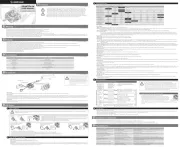
27 Maart 2025

27 Maart 2025

27 Maart 2025
Handleiding Radiografisch bestuurbaar speelgoed
- Revell
- Hangar 9
- Pichler
- Hobby Zone
- JETI
- XciteRC
- Amewi
- Kyosho
- SkyRC
- ScaleArt
- TacTic
- Spin Master
- Carson
- Maginon
- Sky Rider
Nieuwste handleidingen voor Radiografisch bestuurbaar speelgoed
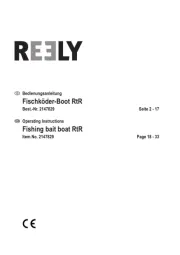
1 September 2025
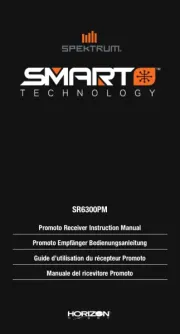
1 September 2025
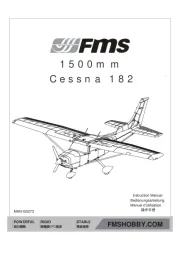
12 Augustus 2025
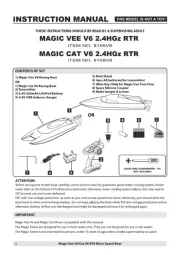
28 Juli 2025
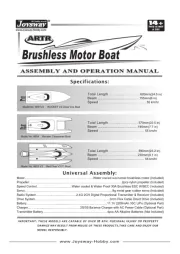
28 Juli 2025
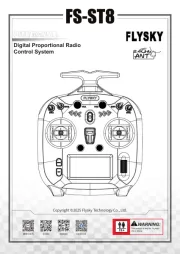
28 Juli 2025
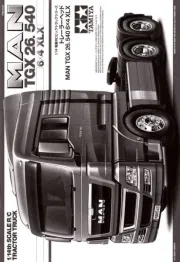
9 Juli 2025
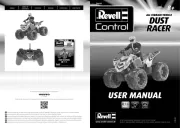
8 Juli 2025
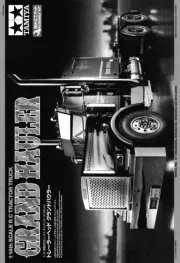
8 Juli 2025
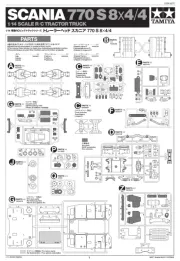
7 Juli 2025